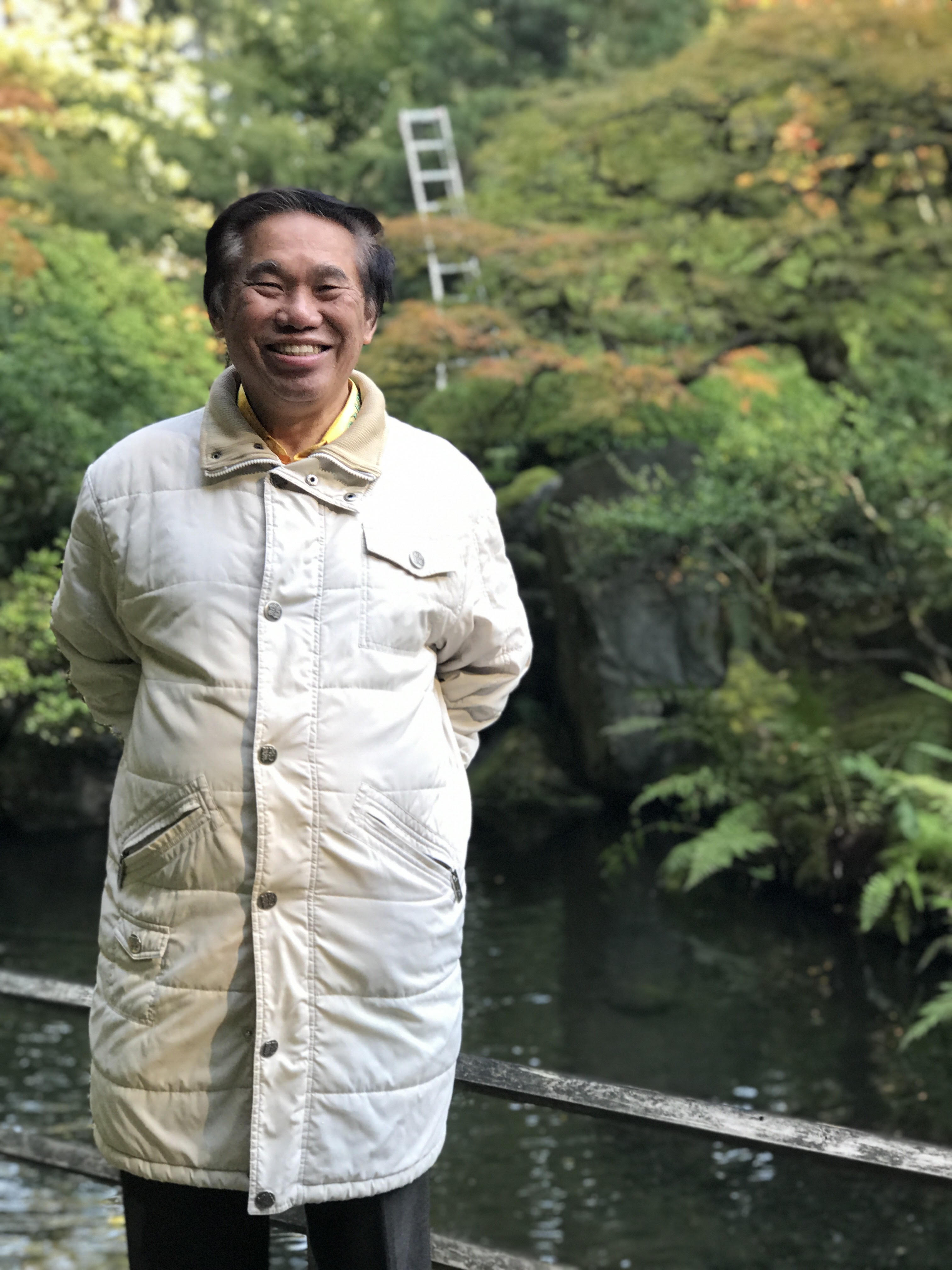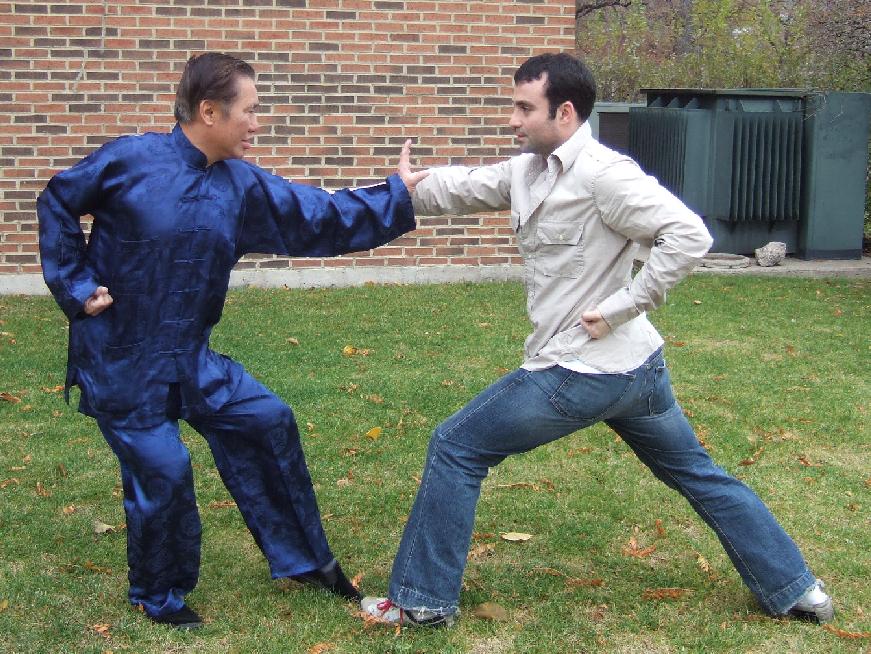SELECTION OF QUESTIONS AND ANSWERS
JANUARY 2022 PART 2

I did not over-train in my student's days
Question 1
I wish to seek your advice on few questions about over-training.
— Dr Foong, Holistic Health Cultivation Centre, Kuala Lumpur, Malaysia
Answer
As over-training is a serious issue in our school, I shall give a detailed answer on it. It has become a serious issue because what I achieved in my student's days in one year, a typical Shaolin Wahnam student can now achieve in one month. I was a fast learner in my student's days, and I had excellent teachers.
I did not over-train in my student's days, but many students and instructors in Shaolin Wahnam today over-train, especially when they practice the same way as they did in an intensive course or a regional course. Over-training is due to yin-yang disharmony.
I specially ask students and instructors to train at only 30% of their potential. If they find 30% too much for them, they should train less, at 20% or 10% or even 5%. It is important to remember that what is "low" level for us, is actually "high" level for other people not in our school.
I recall that about 20 years ago when I first started my world travels, at a time when my level was about a quarter of what it is now, many people asked me to change our intensive and regional courses to master courses. I told them that our intensive and regional courses were actually basic.
The 30% of their potential differs from persons to persons and from time to time. For example, if you practice at 30% of your potential, it may be 500% of another person. This is because of different skill levels. For a person now, when he practices at 30%, it may be 200% in 2 years' time because of his personal improvement.
How do we practice at 30% of our potential? When I teach, I operate at 100%. If we half what I teach at 100%, that will give us 50%. If we half that 50% again, it will give us 25%, which is close to 30%.
Why do I teach at 100% and ask students and instructors to practice at 30%? There are many reasons, but the main reasons are that I want to teach the state of the art, and I want to complete the teaching at the time-frame of a few days of an intensive course or a few hours of a regional course.
Question 2
Why is that our chi kung or kungfu or internal force training could so easily make us over-trained? Is our chi kung/kungfu too powerful or too high level?
Answer
Our chi kung or kungfu could easily make us over-trained because our chi kung or kungfu is too powerful or too high level.
We have improved beyond recognition, while other people merely practice gentle physical exercise. Gentle physical exercise does not overcome illness and does not enhance good health, vitality, longevity, peak performance and spiritual joys.
I have more than a hundred classes a year, whereas most masters or so-called masters have the same class that follows them every year. I started my world travels because my sifu, Sifu Ho Fatt Nam, asked me to pass on the Shaolin arts irrespective of class, culture or religion. It would not be possible if I keep Shaolin secrets.

Over-training is adding internal force when the physical body is unable to bear
Question 3
Is it true that over-training can affect our physical, emotional as well as mental abilities, where there is too much chi that our body and mind has to deal with in order to achieve yin-yang harmony?
Answer
Over-training can affect our physical, emotional, mental as well as spiritual abilities. We should practice at 30% of our potential, or less. Other people do not even practice chi kung; they merely practice gentle, physical exercise.
We are now operating at a very high level. Ten years ago I wouldn't believe that we could achieve such a high level. Many things we practice today, like entering into a chi kung state of mind and experiencing internal force, were learned when I started teaching, not when I was a student.
Question 4
Once I tried to combine practicing chi kung exercise (10 min), Cosmos Palm (5-10 min), Golden Bridge (5-10 min) and Taijiquan (10-15 min). I ended up over-trained and the feeling was not good at all.
Answer
Your training was too much. You should practice for about 10 minutes at about 30%, which is already high to most people.
For myself, I practice for about 10 minutes at less than 30%.

Grandmaster Wong uses "Single Tiger Emerges from Cave" to defend against Sifu Eugene's "Black Tiger Steals Heart"
Question 5
If we are over-trained is it good to stop chi kung and kung fu practice all together and wait for it to recover, or is it better to continue chi kung with light intensity and short duration of practice? Should we stop entirely on kung fu or tai chi or internal force training?
Answer
It depends on how much you over-train.
If it is not much, you can continue training. Train for 10 minutes at 30%, which is actually very high for other people. You can have two training sessions, once in the morning and once in the evening or at night.
As you enjoy your training, later you can train longer and more than 30%.
Question 6
Is there any other chi kung or kung fu school that has issues about over-training that you know of?
Answer
As far as I know, we are the only school that has issues of over-training. There may be other schools, but I don't know of them. I also know of individuals who over-train, but not as a school.
More than 80% of all chi kung or kungfu schools in the whole world perform gentle physical exercise or generously exchange blows in their free sparring. You can readily verify this on the internet.
Less than 20% of chi kung or kungfu schools perform genuine chi kung or kungfu, but they are generally of a low level. Kungfu masters of a high level may not want to teach.

Precious Duck Swims through Lotus
Question 7
When practicing the pattern "Single Tiger Emerges from Cave", is there some forward rotation of the waist? Would you add a little forward rotation to increase the force in leaning on a strong opponent's arm?
— Sifu Leonard Lackinger, Shaolin Wahnam Wien
Answer
Whether a skillful student will use forward rotation to increase the force on an opponent will depend on the combat situtation in question. Ideally, a skilful exponent can do so if he has the skill.
When performing "Single Tiger Emerges from Cave" in a poise mode, we can be quite far from an opponent as he is still some distance from the arena. But when we use it to "lean" on the opponent, which means the opponent is near, the forearm is slightly bent. It should be "lean" and not "block", and the exponent should move a small distance backward. A failure to realize this often results in bruises on the exponent.
The exponent should learn this when "leaning" on the opponent, as in Shaolin Combat Sequence 1. The main idea is to move the front leg from a Bow-Arrow Stance back to a False Leg Stance. His front leg is still in front; he moves from a Bow-Arrow Stance to a False Leg Stance. A skillful opponent may move in to continue his attack, which can come later when an advanced student is ready.
The skillful student can use "one against two", i.e. using one hand to close his opponent's both hands. But for beginners and intermediate students, it is better to move back so that they can have agility and solidity.
Question 8
After learning "Precious Duck Swims through the Lotus" years ago, I got used to the minister hand movement that we use in the combat sequences (brushing to the side). How should we instruct beginners? Should they keep their minister hand at the waist?
If we use "Lohan Ask the Way" as a poise, is the front arm straight or bent? It is correct to have "Dragon Palm" as the emperor?
Answer
In kungfu terminology, the "emperor" hand is the main hand, and "minister" hand is the supportive hand. As most people are right-handed, the "emperor" hand is the right hand, and the "minister" hand is the left hand.
In "Precious Duck Swims through Lotus" it is better to keep the "minister" hand at the waist. In this way we can train our students to be agile. But for you, you can use it in any position. You may, for example, tempt your opponent, or if he is slow you can continue your pressing attack.
If we use "Lohan Asks the Way" as a poise where the right hand is in front, the "emperor" hand is slightly bent. The "minister" hand is kept at the waist. If we use "Lohan Asks the Way" where the left hand is in front as in Shaolin Combat Sequence 1, the left hand is also slighty bent and the right hand is at the waist. In this case the "emperor" hand can be either the left hand or the right hand.
The dragon palm can be used as an "emperor' hand or a "minister" hand. Kungfu is alive and can be very interesting.
Question 9
After which chi kung exercises would you recommend to think of Mingmen instead of the abdominal Dantian?
Answer
We can think of the "mingmen" (at the back opposite the navel) instead of the abdominal "dantian" (elixir field) when we temporarily stop at the "mingmen", like when we bring our "qi" (energy) up from the "huiyin" (external sex organs) to the "baihui" (top of the head) while performing the Gentle Small Universe, or when we want to have sex as the kidneys are important in Chinese medical philosophy.
The thinking of the "mingmen" may take some time as the Gentle Small Universe may last for a few months. The thinking of the "mingmen" to have sex may be shorter. Telling your students may confuse them.
But for you personally, as you may be asking for your students and you are very advanced, you need not be concerned whether you think of the "mingmen" or your abdominal "dantian". You can just practice at about 30% of your potential. But if you enjoy your practice, you can practice longer and more if you want. We can have the luxury; our needs and our liking are different.
If you have any questions, please e-mail them to Grandmaster Wong via his Secretary at stating your name, country and e-mail address.
LINKS
Selected Reading
- How to Overcome or Prevent Over-Training
- Mwn Kiew or Asking Bridge
- Four Gates Combination Set
- Pearls, Pearls
- Across the River
